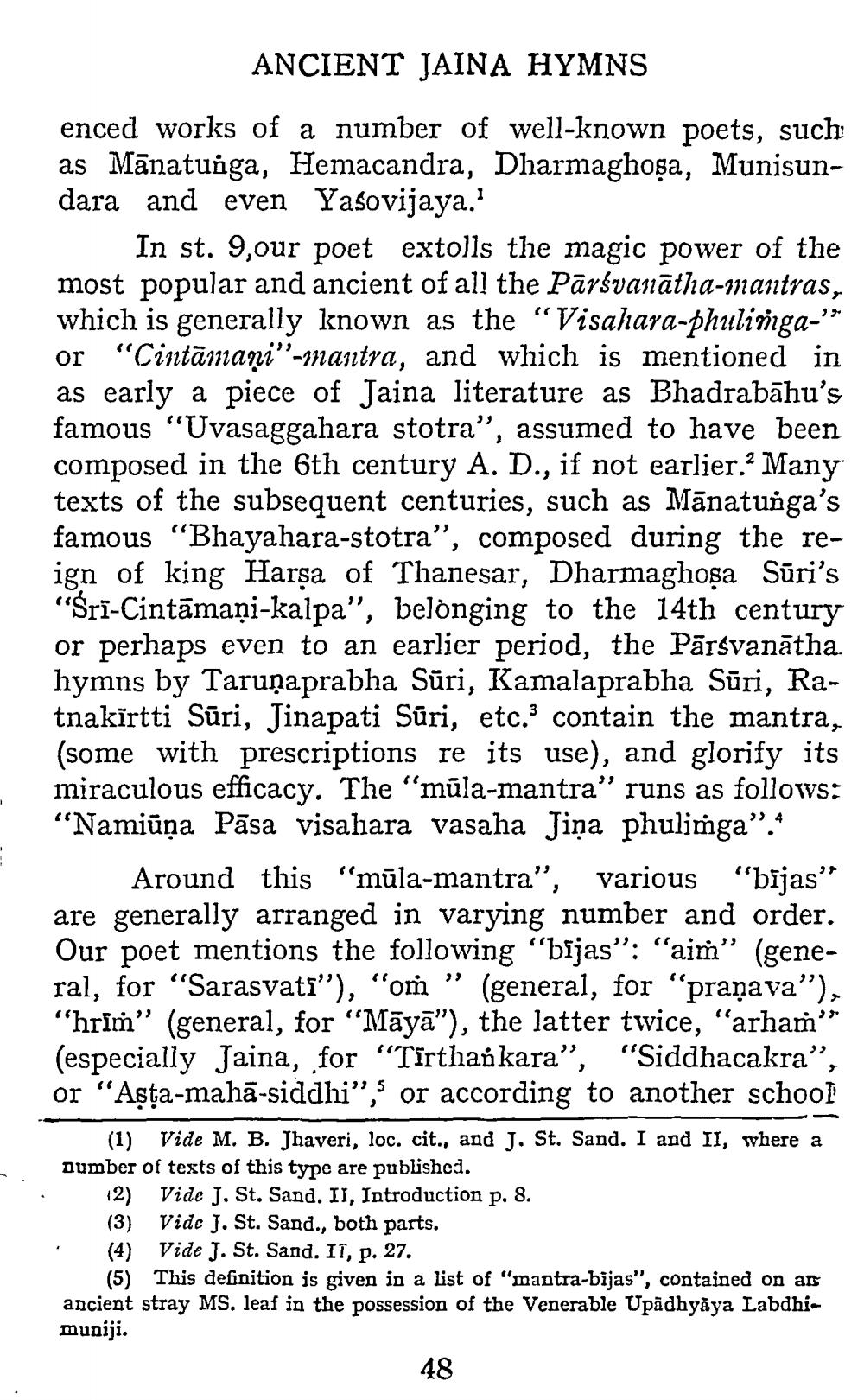________________
ANCIENT JAINA HYMNS
enced works of a number of well-known poets, such as Manatunga, Hemacandra, Dharmaghosa, Munisundara and even Yasovijaya.'
((
In st. 9,our poet extolls the magic power of the most popular and ancient of all the Pārśvanātha-mantras, which is generally known as the Visahara-phulimga-" or "Cintamani"-mantra, and which is mentioned in as early a piece of Jaina literature as Bhadrabahu's famous "Uvasaggahara stotra", assumed to have been composed in the 6th century A. D., if not earlier." Many texts of the subsequent centuries, such as Mānatunga's famous "Bhayahara-stotra", composed during the reign of king Harṣa of Thanesar, Dharmaghosa Suri's "Śrī-Cintamani-kalpa", belonging to the 14th century or perhaps even to an earlier period, the Pārsvanatha. hymns by Taruṇaprabha Sūri, Kamalaprabha Sūri, Ratnakīrtti Sūri, Jinapati Sūri, etc.3 contain the mantra, (some with prescriptions re its use), and glorify its miraculous efficacy. The "mula-mantra” runs as follows: “Namiūņa Pāsa visahara vasaha Jiņa phulimga”.4
Around this "mula-mantra", various "bījas" are generally arranged in varying number and order. Our poet mentions the following "bījas": "aim" (general, for "Sarasvati"), "om " (general, for "pranava"), "hrim" (general, for "Māyā”), the latter twice, "arham” (especially Jaina, for "Tīrthankara", "Siddhacakra”, or "Aṣṭa-mahā-siddhi", or according to another school
(1) Vide M. B. Jhaveri, loc. cit., and J. St. Sand. I and II, where a number of texts of this type are published.
(2)
Vide J. St. Sand. II, Introduction P. 8.
(3)
Vide J. St. Sand., both parts.
(4) Vide J. St. Sand. II, p. 27.
(5) This definition is given in a list of "mantra-bijas", contained on an ancient stray MS. leaf in the possession of the Venerable Upadhyaya Labdhimuniji.
48




